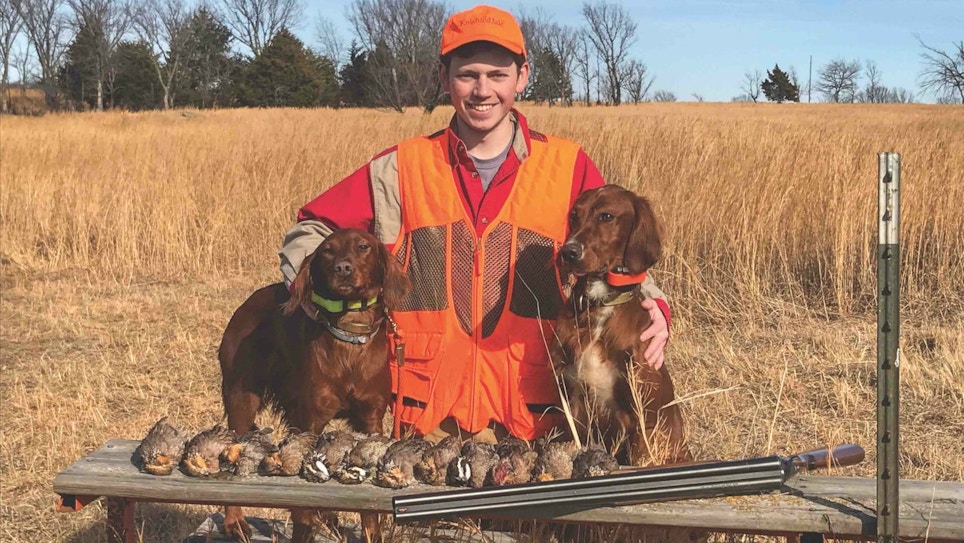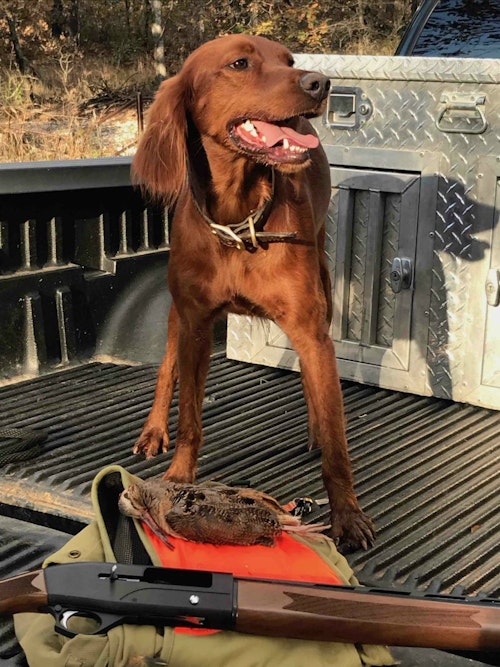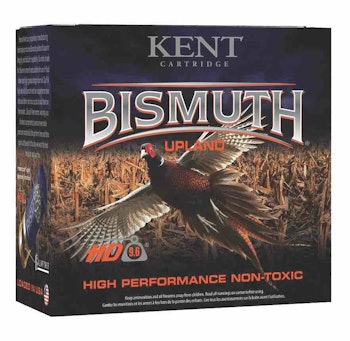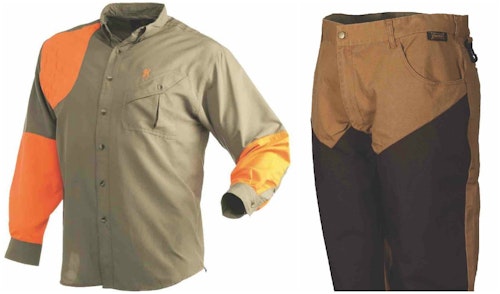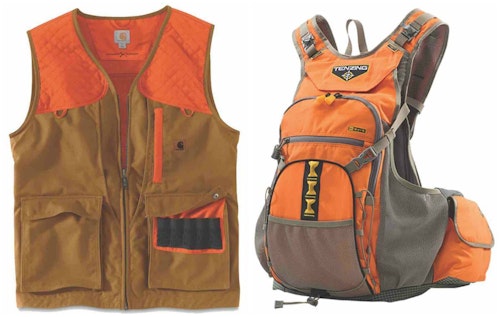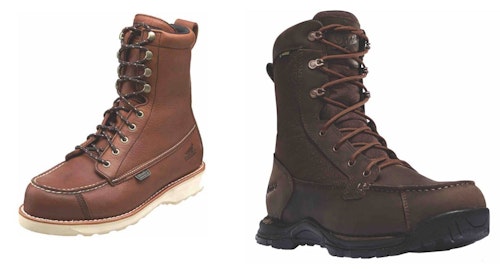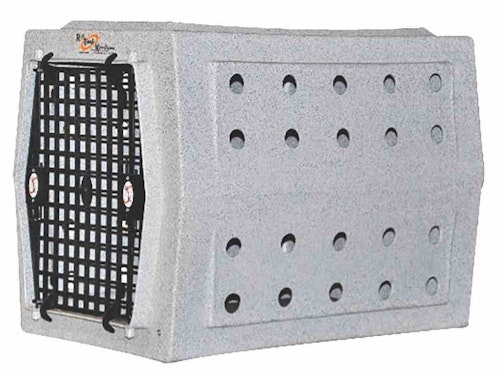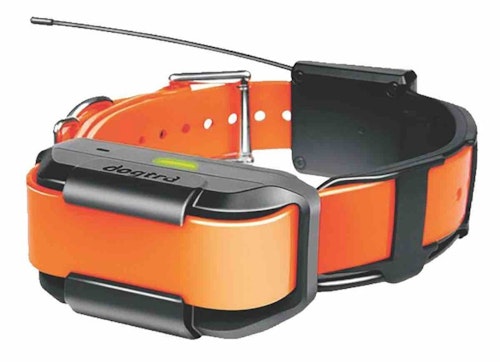Upland bird hunters are an interesting breed. Many keep a kennel full of bird dogs, have a safe full of shotguns and fill their closets and garages with a ton of specialized equipment — all to hunt a little (or sometimes somewhat bigger) bird.
I don’t say that flippantly. In fact, I’ve been an upland bird hunter for more than half a century, and I realize that many people question my and other such hunters’ sanity. Still, we plug along, enjoying our dogs, wild country and delightfully tasty game birds.
From the ruffed grouse of Michigan’s Upper Peninsula to the bobwhite quail and pheasants of America’s heartland, all the way to the desert-dwelling quail of southwest Arizona and chukars in the rugged mountains of the Pacific Northwest, upland game birds are popular quarry for many hunters. And these hunters all have a number of specific equipment needs in order to enjoy their sport to its fullest.
If you’re not already catering to upland bird hunters, you’re missing out on a piece of business you should strongly consider addressing. Let’s take a quick look at some of the products in demand by upland bird hunters.
Guns
Number one is guns, and the shotguns typically used by upland bird hunters run the gamut from semi-autos to side-by-sides to over-and-under doubles and even pump guns. Most are lightweight, well balanced and easy to swing on fast-moving upland birds. While gauges run the gamut from .410 bore to 12-gauge, the vast majority of hunters use 20- and 12-gauges. Slight upticks in hunters who use the diminutive 28-gauge and others who prefer the 16-gauge make the market for those guns fairly strong, also. Most upland bird hunters prefer improved cylinder chokes, as many bird species are small and shot at somewhat short distances. However, those hunting bigger birds like pheasants and some Western grouse often step up to a modified choke for a better pattern at extended ranges.
Companies that make fine upland bird-specific models include Remington, Browning, Beretta, Benelli, Mossberg, Franchi, Ruger, Ithaca, Winchester, CZ-USA and several others. Since bird hunters run the demographic range from the very wealthy to modest-income beginners, a selection of guns in different gauges, types and price ranges will give your customers the best opportunity to purchase one or more.
Ammo
Ammunition is another important requirement, and many hunters burn through a lot of ammo in a typical season. Hunters pursuing quail and smaller grouse species typically opt for fairly light loads in No. 7 1⁄2 or 8. In steel, they typically move up to No. 6s since the lighter steel doesn’t hit as hard as a lead pellet. For those hunting pheasants, partridges and larger grouse species, more powerful No. 6 lead (4 steel) loads are the most commonly used, since those birds are larger and a little harder to kill. A good selection of lead shells from different manufacturers ranging from light No. 8s to heavier 6s will meet most upland hunters’ needs quite well.
Many companies make great upland bird ammunition, including Winchester, Federal, Browning, Fiocchi, Remington, Kent, Estate and Rio. Some areas, especially some publicly owned lands, require the use of nontoxic (non-lead) ammunition for hunting upland birds. Companies that make and market steel upland bird ammunition include Federal, Winchester, Kent, Remington and Rio. Additionally, Kent, Hevi-Shot, Rio and a few other companies make upland bird shells loaded with bismuth, tungsten and other non-lead shot.
Apparel
Upland bird apparel is another product segment that holds good profit potential. Of course, it’s possible to hunt most upland birds in an old flannel shirt and jeans with the pockets stuffed full of shotgun shells. But specialized apparel designed just for upland hunters makes that unnecessary.
For lower wear, most upland hunters go with either chaps or upland hunting pants. Both are made to be comfortable while protecting hunters’ legs from the slashing, scratching and poking bushes, shrubs and trees where upland birds seem to always take refuge.
For upland pants, hunters typically look for those made from a durable material that will stand up to wind, rain, snow and harsh terrain. They must be tough enough to hold up to heavy brush, while comfortable enough to wear while walking all day. They also need to be light enough to wear during warmer, early-season hunts. Lastly, they need a reinforced fabric, like Cordura or nylon, on the front of the legs to protect hunters from scratching, stabbing and cutting flora.
Note that upland hunting pants are available in a wide range of prices, from about $50 to well over $200. Companies that market quality upland hunting pants include Browning, Wrangler, Under Armour, Gamehide, Kuhl, Columbia, Carhartt and Mountain Khakis.
For upper wear, many companies manufacture upland hunting shirts made specifically for bird hunters. While having such a shirt isn’t a necessity, they sure look cool and quickly identify you as an upland bird hunter to those who see you wearing one.
Many are made in brown and khaki colors with orange highlights, which contributes to safety in the field. Most are long-sleeved and fairly lightweight, making them good for early-season hunts and also still useful for late-season hunts with a base layer or two underneath. Most have a somewhat padded patch on the right shoulder or both shoulders, although I consider it more of a symbol of membership in the upland fraternity than an actual recoil reducer.
Companies that market good upland shirts include Browning, Gamehide, Banded Gear, Columbia and Duck Camp.
Hunting Vests
A good upland bird hunting vest is another critical piece of equipment and serves several important purposes. A good vest will securely hold a large number of extra shotgun shells, provide room to carry game birds that have been bagged, and have plenty of pockets to carry other important stuff like gloves, water bottles, dog boots, first aid items, leashes, tracking collar transmitters and other miscellaneous gear.
One of the most important criteria of an upland vest is being lightweight, since vests are likely to be worn while walking several miles a day. Of course, hunters are just going to load it down with heavy shotshells and a bunch of other gear, but starting out a little lighter is still a win.
While the historical vest design covering all of the back and front is still very popular, many hunters, especially younger ones, are opting for more untraditional designs made more like lightweight hiking packs. Whichever hunters choose, they need to have a rugged exterior that resists tearing in heavy brush, a strong zipper or other enclosure that won’t fail with repeated use, and at least some blaze orange on the exterior for safety purposes. Some newer models are being made with an enclosed hydration bladder, which is handy for both hunters and dogs, especially in hot, dry climates.
Vest brands to consider include Browning, Columbia, Carhartt, Tenzing, Q5, Trekker and Filson.
Consider the Cold
For retailers in very cold climates, an upland jacket or two in their inventory might be another good option. But for much of the country, jackets are just too warm to wear when walking long distances during much of the upland season.
Upland hunting boots could be a story all their own, as the vast distances often walked by hunters make boots among the most important pieces of gear. They’re also one of the most likely products to be bought from a local retailer instead of online because fit is such an important factor.
Because of all the walking, upland hunters need boots that are lightweight and comfortable. Yet they also must have plenty of structure and stability to avoid knee and other leg injuries. A boot with a waterproof lining is a plus, especially for those who frequently hunt in wet habitat or during inclement weather. Many hunters wear uninsulated upland boots, especially in warmer climates, because with lots of walking comes sweaty feet. However, some prefer insulated boots, especially in the late season in cold environs. If your retail establishment is in the southern part of the country, you’ll likely want to carry mostly uninsulated boots. But those operating in colder climates should carry a mix of insulated and uninsulated.
Manufacturers offering fine upland hunting boots, both insulated and uninsulated, include Irish Setter, Danner, Browning, Rocky and Wood N’ Stream.
Retailers in areas with lots of rattlesnakes should consider carrying a few different models of snake boots for their upland bird hunting customers. Danner, Irish Setter and Rocky all offer taller boots designed to protect hunters from rattlesnakes and other poisonous vipers.
Don’t Forget the Dogs
With the upland hunter outfitted, dog supplies are another category that could be a complete story of its own. If upland bird hunters love anything more than hunting, it’s their dogs — and most are willing to spend a good bit of money taking care of them.
The vast array of dog products fall into several different categories, and we won’t try to look at them all here. However, categories that could bolster your bottom line include travel kennels, whistles, leashes, collars and gear boxes. Training supplies such as check cords, bird launchers, blank pistols and first-aid kits are also commonly used by upland hunters.
Dog boots are good sellers in areas where lots of cactus, stickers and other sharp things are found on the ground, making hunting bootless nearly impossible. Additionally, many hunters have begun outfitting their dogs with protective vests to guard against those kinds of dangerous nuisances and others.
Electronic dog-training devices can provide retailers with yet another profitable category of upland gear. Many upland bird hunters use electronic training collars. And even many who don’t use electronic training collars do utilize GPS tracking collars. Both are made by a number of manufacturers, and their popularity continues to grow.
In truth, the vast amount of equipment needed by upland bird hunters is likely one of the things that keeps more people from entering the sport. But those who are longtime upland hunters have it in their blood and will continue to purchase the products they need year after year. Taking advantage of that opportunity can help retailers better serve their customers also while bolstering their bottom line.
